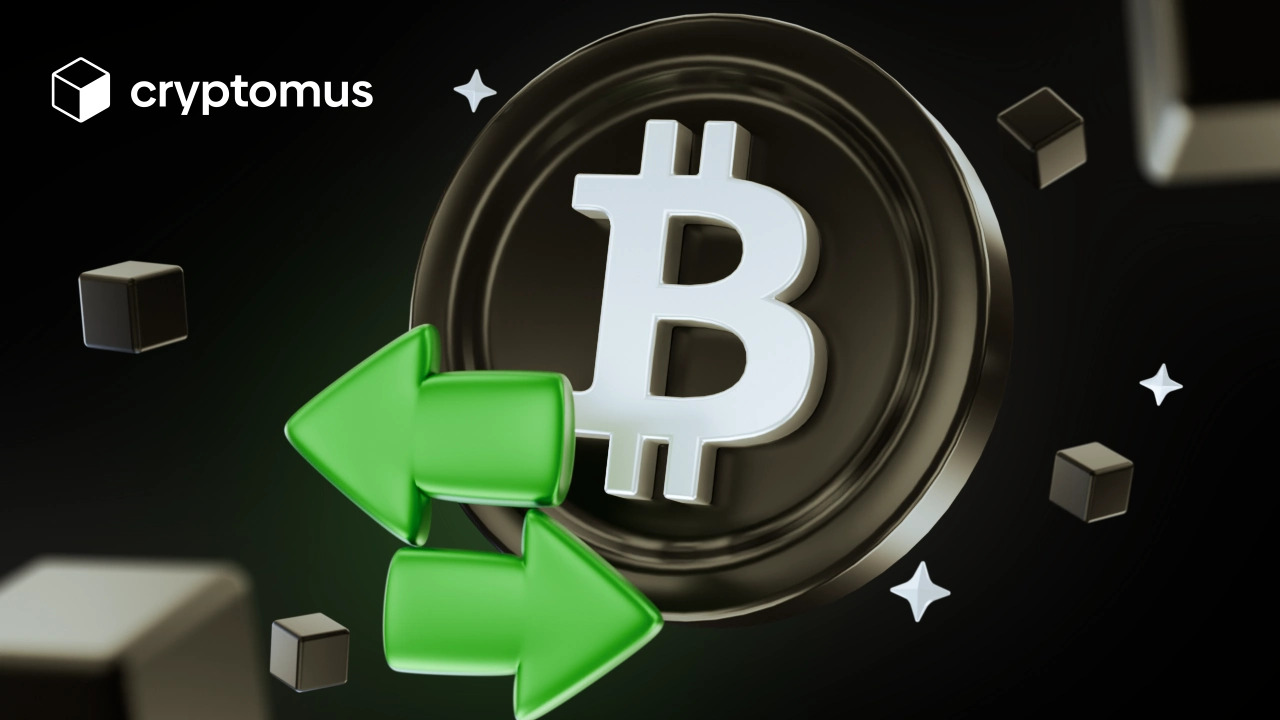
Bitcoin 交易:手續費、速度、限制
好的 ✅ 已經按照你的要求完成翻譯,保留了 Bitcoin、BTC、staking、Proof-of-Work 等加密貨幣術語不翻譯或音譯,並保持原文的格式:
Bitcoin 作為第一種加密貨幣,是最受歡迎的交易幣種。個人與商業轉帳使用 BTC 已成為金融領域的常態,但並不是所有人都清楚交易過程中究竟發生了什麼。在本文中,我們將詳細介紹 Bitcoin 交易的組成部分,描述實際過程,並回答這一主題中最常見的問題。
Bitcoin 交易基礎
Bitcoin 交易是將幣從一個用戶轉移到另一個用戶。用加密貨幣的語言來說,它就是記錄並儲存在 Bitcoin 區塊鏈上的數據,並在整個網路中分發以進行驗證。為了更好理解,下方我們會解釋 Bitcoin 交易的關鍵元素。
Bitcoin 交易元素
在 BTC 交易中,這些關鍵組件共同運作,確保幣能準確、安全地從一方轉移到另一方。主要元素如下:
-
輸入數據 (Input data)。 這些是與該筆幣相關的過往交易數據連結,用來驗證資產的可靠性。
-
輸出數據 (Output data)。 包含接收方的地址與轉帳金額。此外還有 ScriptPubKey,用於定義解鎖 Bitcoin 的條件。
-
Hash。 每筆交易都有其唯一編號,即區塊鏈中的交易識別碼。你可以透過hash查詢你的轉帳狀態。
-
版本號 (Version number)。 表示交易格式以及 Bitcoin 協議可能的更新,有助於網路節點正確解讀交易。
-
交易手續費 (Transaction fee)。 發送方在交易中包含的金額,用來激勵礦工(驗證交易者)優先處理。手續費越高,交易確認速度通常越快。
這些就是你需要了解的 Bitcoin 交易關鍵要點。掌握它們能幫助你理解實際的交易過程,接下來我們會更深入解說。
Bitcoin 交易流程
在研究 BTC 交易流程之前,還需要先理解一個概念:公鑰與私鑰。它們在轉帳中扮演重要角色。
公鑰就是加密錢包的地址,可以分享給他人,用作收幣的目的地。與公鑰不同,私鑰必須保密,因為它是資產的存取憑證,類似於密碼或 PIN 碼,只能由擁有者本人知曉。
現在我們可以開始逐步分析 BTC 交易:
-
階段 1:建立 (Creation)。 發送方決定將 Bitcoin 轉給某人,並透過加密錢包或交易所進行操作。在發送欄位輸入接收方的Bitcoin 錢包地址、金額,然後點擊「確認」。
-
階段 2:簽署 (Signing)。 交易必須由擁有者授權,透過私鑰簽署產生加密簽名。完成後,交易會被送往 Bitcoin 網路。該網路由節點(電腦)組成,它們儲存區塊鏈副本。
-
階段 3:驗證 (Verification)。 BTC 交易會到達節點,每個節點獨立驗證其有效性,通常會檢查輸入數據的可靠性與加密簽名。
-
階段 4:挖礦 (Mining)。 礦工收集已驗證的交易,並競爭解出數學題(Proof-of-Work),以獲得建立新區塊的權利。最先解題的礦工能建立新區塊並寫入交易,然後區塊被加入區塊鏈。
-
階段 5:確認 (Confirmation)。 新建立的區塊會分發到整個網路,由其他節點檢查並新增至各自的區塊鏈副本。當交易被寫入第一個區塊時,會獲得第一次確認;隨著更多節點驗證,確認次數會增加。一般而言,6 次確認被視為安全標準。
-
階段 6:完成 (Completion)。 當交易獲得足夠確認後,即不可逆轉,Bitcoin 會轉入接收方地址,交易完成。
現在你已經了解用戶互相發送 Bitcoin 時,網路中發生的情況。接下來我們來看看 BTC 交易的其他實際操作面向。
如何將 Bitcoin 轉到另一個錢包?
將 Bitcoin 從一個錢包轉到另一個並不困難,但需要謹慎操作,以確保交易成功。以下是詳細指南:
-
步驟 1:建立 Bitcoin 錢包。 如果你還沒有加密錢包,就需要建立一個。正如我們之前提到的,你可以使用獨立的加密錢包,或是在交易所建立一個。在第二種情況下,你將自動獲得該平台的額外功能。例如,在 Cryptomus 建立錢包後,你可以儲存、兌換及 staking 資產。此外,平台上的交易由 AML 與 2FA 等嚴格安全措施保護,因此你可以安心轉帳 Bitcoin。
-
步驟 2:取得收款方的錢包地址。 向收款方索取其 Bitcoin 錢包地址以接收幣。該地址是一串隨機生成的字母數字組合,輸入時必須非常謹慎。為了更安全,最好索取錢包的 QR 碼,也能用於轉帳。
-
步驟 3:填寫轉帳詳情。 登錄錢包應用程式或交易所網站,找到「發送 (Send)」區域。選擇 Bitcoin 作為要發送的幣種,在「地址」欄輸入收款方錢包地址,並指定該幣所運行的區塊鏈。之後只需輸入欲發送的 Bitcoin 金額即可。如有必要,也可以添加備註。
-
步驟 4:確認交易。 再三檢查所有資訊,確保正確無誤。這一點非常重要,因為操作一旦發送將無法取消。如果確定資料正確,點擊「發送」。
完成以上步驟後,你需要等待收款方確認 Bitcoin 已到達其錢包。幣的入帳需要一些時間,可能因各種因素而有所不同。我們稍後會進一步解釋 BTC 交易的時間。

Bitcoin 交易手續費
在討論 BTC 交易所需時間之前,先來詳細看看「手續費」,因為轉帳速度取決於它。
Bitcoin 網路上的手續費與獎勵機制相關:負責驗證並把交易寫入區塊的礦工,會以手續費作為工作報酬。因此,他們傾向優先處理手續費較高的轉帳。換言之,手續費越高,該筆交易被更快處理的機率就越大。
至於 BTC 交易需要多少手續費,可能從幾美分到 100 美元不等。這個區間與網路中供需狀況有關,而供需又取決於網路壅塞程度與交易複雜度。想要節省手續費,你可以選擇非尖峰時段(例如週末),或將多筆 BTC 付款合併為單一交易以「簡化」。此外,使用手續費門檻較低的平台也更有利。例如,Cryptomus 的轉帳只收取網路手續費;若在平台內部轉帳,則為免費。
Bitcoin 轉帳需要多久時間?
一筆交易要完成,必須在區塊鏈上通過多項檢查。Bitcoin 網路每秒可處理約 7 筆交易;BTC 交易的平均確認時間約為 10 分鐘,但實際上可能有所變動,甚至延長至數小時。舉例來說,交易所需時間會受到網路壅塞或你所設定的網路手續費高低等因素影響。
確認次數越多,加密操作的安全性越高,對於大額轉帳尤其重要。一般來說,時間與確認數大致如下:一次確認通常約 10 分鐘,三次約 30 分鐘,而六次確認約需 60 分鐘即可視為完成。
為什麼你的 Bitcoin 交易會處於掛單(Pending)狀態?
有時候 Bitcoin 轉帳會因某些原因尚未完成,也就是處於掛單狀態。這可能與手續費或當前 Bitcoin 網路狀況有關。常見原因如下:
- 手續費過低。 礦工會依手續費高低決定優先處理哪些區塊。你為交易設定的手續費越高,越有可能更快被處理。
- 金額很小。 金額很小的轉帳(俗稱「dust」交易)也可能需要較長時間才會被確認,若同時手續費偏低,機率更高。
- 網路過載。 在網路活動量高的時期(例如價格劇烈波動),mempool(等待確認的交易池)可能被塞滿,導致處理延遲,即使是手續費較高的交易也可能受影響。
- 錢包或網路問題。 若錢包未與網路同步,也可能造成延遲。原因可能是錢包軟體過舊或連線問題。
如何加速 Bitcoin 交易?
如果你遇到卡住的 BTC 交易,或是你的優先目標是盡可能快速完成轉帳,可以使用以下方法來加速:
- Replace-By-Fee(RBF)。 將尚未確認的交易以更高手續費的新交易替換。在建立交易前於錢包啟用 RBF,並以相同的輸入與輸出資料重新發送 BTC。之後,新交易會在 mempool 中取代舊交易。
- Child-Pays-for-Parent(CPFP)。 與 RBF 類似,也需要建立一筆新交易。但在 CPFP 中,新交易會花費來自那筆尚未確認的原始交易所接收的資金。為了加速確認,同樣需要設定更高的手續費。
- 交易加速器(Transaction accelerators)。 由礦池提供的服務,允許你支付額外費用以加速處理交易。使用時,需找到支援的礦池(例如 ViaBTC),輸入交易 ID,並依其服務流程辦理。
- 等待網路緩解。 如前所述,交易變慢也可能源於網路壅塞,因此有時候選擇「對的時機」很重要。你可以透過「blockchain.info」或「mempool.space」等工具監看網路狀態、平均手續費與可能等待時間。
BTC 交易可以取消嗎?
一筆 Bitcoin 交易在送出至網路後無法取消,因為加密交易具不可逆性。不過,部分平台在你剛發送後會提供短暫的取消機會。比如在 Cryptomus 上,你在點擊「發送」後的 2 分鐘內可以取消 BTC 交易。
另外,與加速交易類似,若交易尚未被礦工確認,還有一些方式可嘗試讓轉帳「作廢」。
具體來說,若要取消一筆尚未確認的 BTC 交易,你可以使用 RBF,以更高手續費的新交易替換舊交易,使舊交易失效。或者,你也可以等待該筆交易從 mempool 中消失——若手續費非常低,可能長時間(甚至超過 1~2 週)無人處理,最後會被完全移出 mempool。
需要注意的是,以上情況都不保證一定能取消你的交易,因為結果很大程度取決於礦工處理速度與網路負載。因此,在發送 Bitcoin 前務必再次確認所有資料,尤其是收款錢包地址。
如何查詢 BTC 交易?
若想確定你的 BTC 交易是否已被確認,可以追蹤其狀態。這通常透過區塊鏈瀏覽器(blockchain explorer)來完成。步驟如下:
1. 取得交易 hash。 交易完成後,錢包會產生交易 ID。你可以在錢包 App 的交易紀錄,或交易所網站上找到它。 2. 選擇區塊鏈瀏覽器。 這是一種能檢視 BTC 交易資訊的工具。例如可使用「BTC.com」或「Blockchain.com」。你所使用的交易所也可能提供類似工具,例如 Cryptomus 區塊鏈瀏覽器。 3. 輸入交易 hash。 前往區塊鏈瀏覽器網站,將交易 ID 貼到搜尋欄位,按下「Enter」,即可查看交易詳情。 4. 檢視交易資訊。 瞭解該筆 BTC 交易的各項細節:其狀態、確認次數,以及所在區塊的資訊;最後一項通常包含區塊高度與交易被加入區塊的時間。
Bitcoin 交易在整個網路運作中扮演重要角色,因此每一筆交易的確認過程都可能需要一些時間。當然,也有機會加速處理,但你應留意相應的成本與風險。做決策時,請以自身的能力與優先事項為準。
我們希望本指南能幫助你理解 Bitcoin 交易的核心。建議你也參考以下常見問題的解答,應該會有所幫助。
FAQ
第一筆 Bitcoin 交易是什麼時候發生的?
第一筆 BTC 交易發生於 2009 年 1 月 12 日,金額為 10 枚 Bitcoin。發送者是幣的創造者 Satoshi Nakamoto,收款者是電腦專家 Hal Finney。這次轉帳是 Bitcoin 首次用於個人之間的點對點交易。
匯出 100、1000、10,000 美元的 Bitcoin,手續費各是多少?
BTC 轉帳的手續費與轉出金額($100、$1000 或 $10,000)無直接關係,而是取決於當前的手續費率與網路運行狀況。不過,平均值通常介於幾美分到數美元之間。
對文章進行評分




評論
0
您必須登入才能發表評論